
Energy harvesting is the process of collecting of energy from an array of environmental sources, both natural and artificial, most of which is otherwise wasted. These myriad forms of energy include any of those sources through which we can extract electrical current to power any number of low-power devices. The ability to recover even a fraction of this energy could have significant economic and environmental impact.
To these ends, an energy harvesting system consists of many microelectronic solutions with the aim of satisfying the fundamental load requirements. The process, though, is not without its challenges. For example, while commonly used energy transducers such as piezoelectric, thermal, or RF provide variable output voltages, they often do not meet the load requirements of a great many applications. Consider also solar energy, which is highly variable, day and night. Thus, it does not lend itself to powering electronic circuits such as microcontrollers that require a continuous and constant voltage level, e.g., 5V or 3.3 V, to work.
And while DC-DC converters provide a stable supply voltage, the input is typically not stable due to fluctuations inherent in the energy sources themselves. Adding to the challenge is need for absorption requirements to be as low as possible.
So what are our options? That’s the question we’ll explore as we survey a variety of energy sources and circuits for harvesting their energy.
***
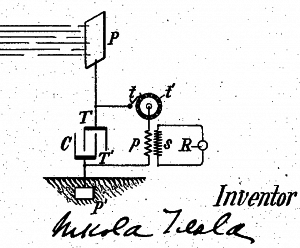
In 1901 Nikola Tesla was granted several patents for a system of radiant energy transmission and reception. The system utilized “natural media” such as the atmosphere and ground to transmit power with virtually no losses.
Environmental energy occurs naturally at both large and micro-scales. In microelectronic systems, micro-scale energies involve such sources as electromagnetic waves and solar energy. While the overall efficiency of these systems remains remarkably low (often less than 30%), they’re still useful. Fossil fuels, on the other hand, are limited, expensive, and not at all environmentally friendly. Anticipating such a dilemma, Nikola Tesla himself famously mused over the question of capturing “all energies of the Earth,” which he addressed in part with his radiant energy collector.
Batteries, of course, power a great many current technologies. But they, too, present certain challenges. With the advent of the Internet of Things, many sensors are deployed in difficult environments where battery replacement or recharging is a task that requires special (additional and potentially costly) features. In this context, the possibility of implementing an external source of power to charge the battery would bring welcome efficiencies. The possibility of avoiding battery replacement at all is even more attractive, especially for wireless sensor networks with high maintenance costs (Figure 1).
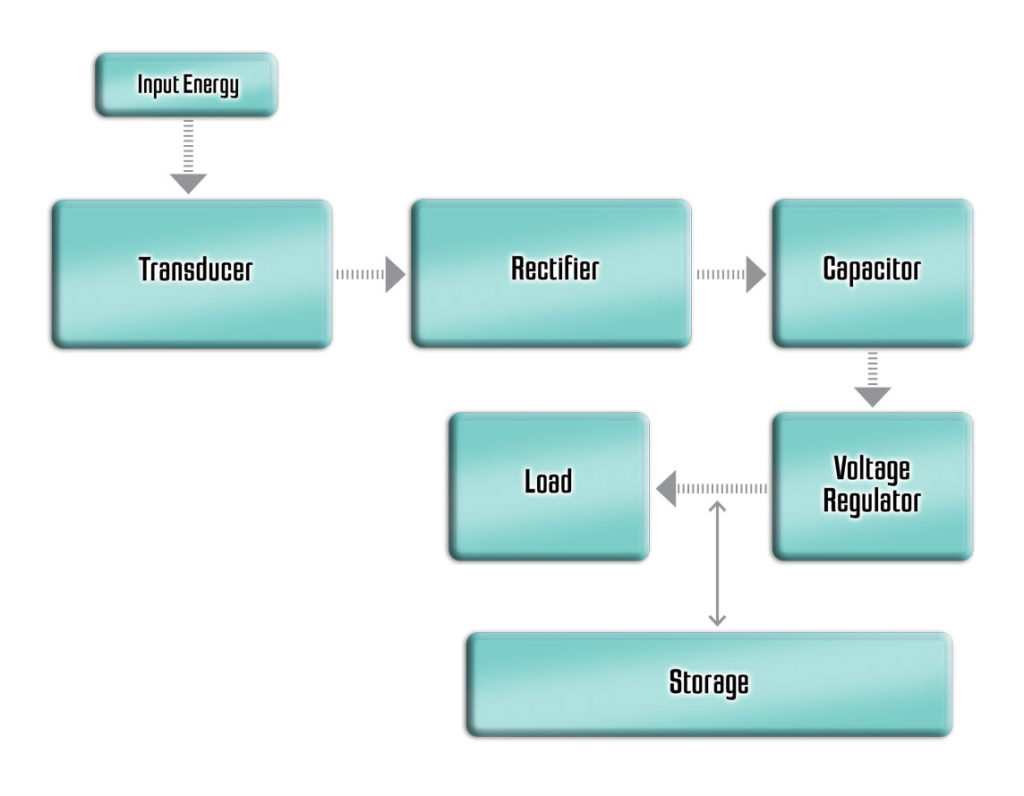
Figure 1. A block diagram of energy harvesting system.
Energy Sources
In short, the objective of an energy harvesting system is to convert ambient energy into electricity. There are many scientific techniques that can be used to capture the energy that is currently lost or dissipated in the form of heat, light, sound, vibration, or movement. Examples include the piezoelectric effect, which converts mechanical strain from motion, weight, vibration, and temperature changes into voltage or electric current. The pyroelectric effect converts a temperature change into electric current. And there are emergent metamaterial-based devices that are able to convert a microwave signal into electrical current.
In addition to the relative conversion via transducer, an electronic circuit is needed to manage the energy collected by the power management circuits (Figure 2 and 3).
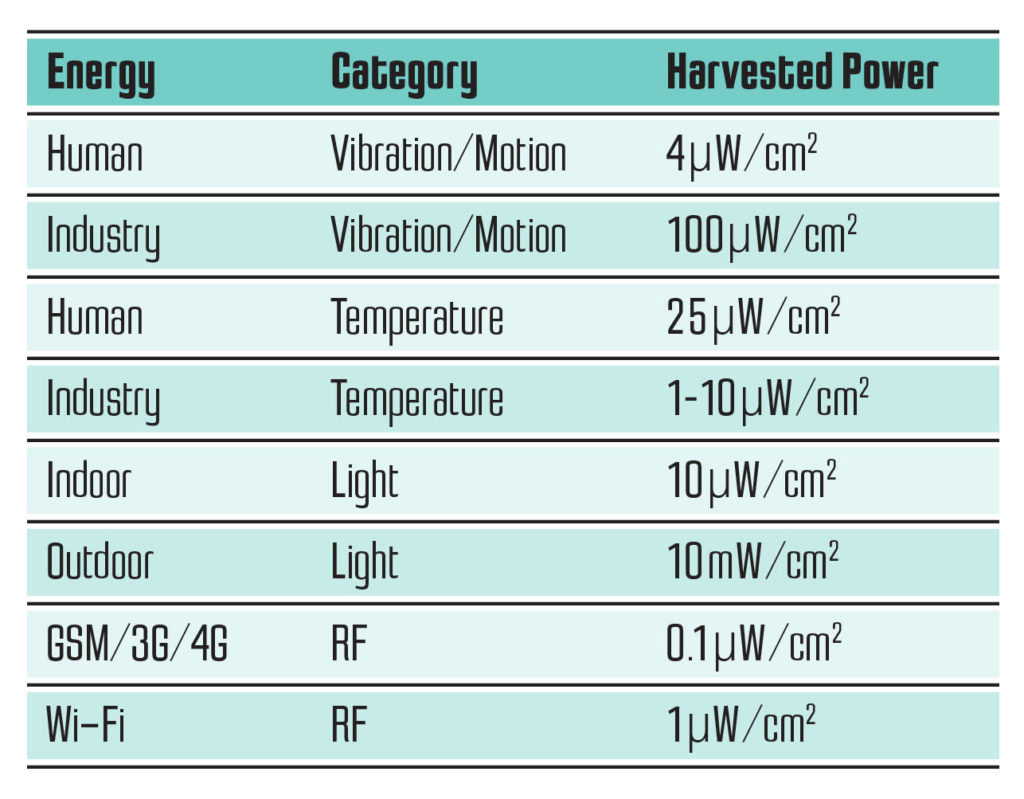
Figure 2. Energy values for several categories of energy harvesting.

Figure 3. Sources of energy harvesting.
The electrical energy obtained is very small (from about 1 W / cm3 to 100 mW / cm3), and therefore has a working point only in low power modes (solar energy can have a working point in a high-scale system). A sensor, a microcontroller, and a wireless transceiver constitute a typical electronic load. The energy consumption is on the order of nA to uA for the first two components, and a few mA for the transceivers.
Ambient Energy
The primary sources of “free” energy are solar, mechanical, thermal, and electromagnetic. Let’s take them in turn.
Light is a source of environmental energy available for both low and high power electronic devices; a photovoltaic system generates electricity by converting solar energy.
The sources of mechanical energy include vibrating structures or moving objects. Vibration is the source of energy for mechanical transducers, and is characterized by two parameters: acceleration and frequency. Acceleration is directly proportional to its displacement from its equilibrium position, whereas frequency derives from oscillations measured in hertz, and is the number of oscillations per second from its equilibrium position. Frequency analysis allows us to evaluate various frequencies and the damping effects as oscillations in a system decay after a disturbance. Many systems exhibit oscillatory behavior when they are disturbed from their position of static equilibrium—the behavior of a mass attached to a spring comes to mind.
Likewise, one or more transducers of movement measure output vibration. For example, the vibrations of industrial machines have accelerations between 60 and 125 Hz. A piezoelectric sensor can convert this acceleration into electrical current. Even human walking is an energy source for the production of electrical signals. The movement of fingers can actually generate a few mW; limb movement, about 10 mW; exhalation and inhalation, about 100 mW; and walking can produce several Watts!
Thermal energy exploits the Seebeck effect—the direct conversion of temperature differences to electric voltage to generate a potential difference—yielding the thermoelectric effect. Thin film thermoelectric elements provide an ideal starting point for efficient conversion to useful battery-like operating voltages. Thermoelectric generators represent the most common application of the Seebeck effect, and could be used in power plants to convert waste heat into electrical current, and also in automobiles to increase fuel efficiency.
Finally, electromagnetic energy is sourced both naturally and artificially in the atmosphere. RF energy, comprising any of the electromagnetic wave frequencies that span around 3 KHz to 300 GHz, and including those frequencies used for communications, is the power source for mobile phones, TV, and wireless routers. The ability to collect RF energy enables the wireless charging of low-power devices, while also setting battery use limits.
Speaking of batteries, devices without a battery can be designed to operate only at certain time intervals or when a supercapacitor or other energy storage devices, such as thin film batteries, have sufficient charge to activate the electronic circuit (Figure 4).
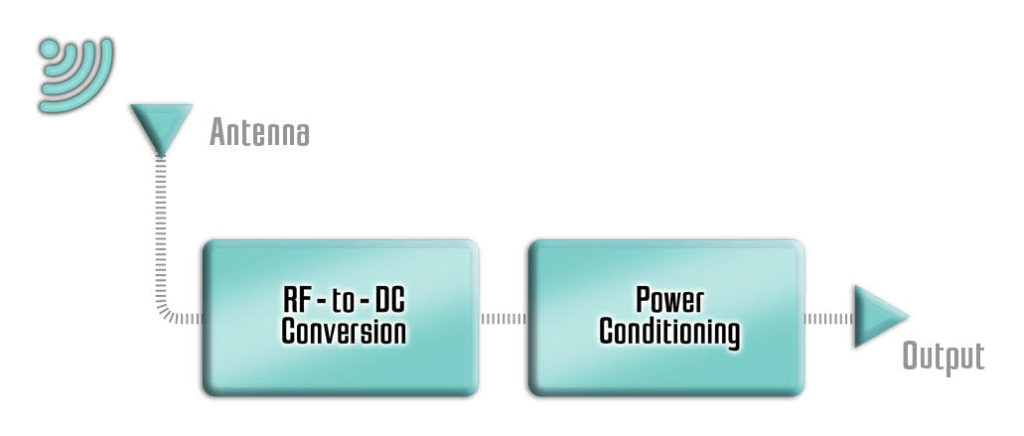
Figure 4. RF energy harvesting.
An Energy Harvesting System
Conditioning circuits improve the quality of the power that is delivered to electrical load, and play an essential role in an energy harvesting system through the optimization of various parameters such as input impedance and filtering. The power limit of a system is greatly reduced with conditioning circuits, which operate at low power levels, reducing losses and increasing the efficiency of the collection system. The purpose of the conditioning circuit is to avoid large-scale solutions by using a storage system for providing a correspondence between the temporal profiles of the power demand from the load source.
The harvesting system can be modeled by a combination of linear and nonlinear circuit elements. The maximum transmissible power is when the load is the complex conjugate of the output impedance. The process for the control of the output voltage is to keep constant the value as a function of load variations. Switching converters are power converters that allow the maintenance of the output power without further losses. In a conditioning system with passive circuits, such as the rectifier, the problems are concentrated on the input impedance: a zero voltage on the storage system is presented as a short circuit. The problem is exacerbated if the capacitor has a relatively large capacity and may require many minutes to charge. Additionally, it is necessary that in the starting phase the load does not require a lot of energy.
In energy harvesting applications, DC-DC converters play an essential role, providing various output voltages with the aim of providing a stable configuration to the voltage level for the electrical loads. Switching regulators provide an alternative to linear regulators (LDO) by generating a constant and independent output voltage from the input voltage and the output current (Figure 5).
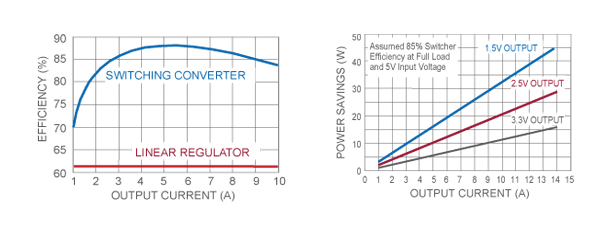
Figure 5. Power savings and efficiency between LDO and switching regulators.
Supercapacitors
Recent studies in the field of super-capacitors (SC), also known as ultracapacitors or electrochemical capacitors, have developed excellent alternatives for energy storage. Supercapacitors have a greater number of discharge cycles compared to conventional batteries, and can operate across a wide temperature range. The disadvantages reside in the low energy density and high self-discharge. In general, to maximize the efficiency of energy storage, the total leakage power is kept low. To maximize energy efficiency on the load, the residual energy is minimized by setting a series configuration with more supercapacitors to increase the voltage above the minimum of the DC-DC converter input voltage.
Useful life is the main advantage of this technology with more than 10,000 cycles—far superior to the best batteries. In comparison with the size dimension, the maximum deliverable power is higher than that provided by current batteries, and this makes them well suited to withstanding the demands of modern technology. It’s for this reason that they are widely used in hybrid systems. In supercapacitors, the dielectric is achieved by an organic liquid electrolyte absorbed in the separation zone between the plates, whose limit is the tension bearable between 3 V and 6 V (Figure 6).
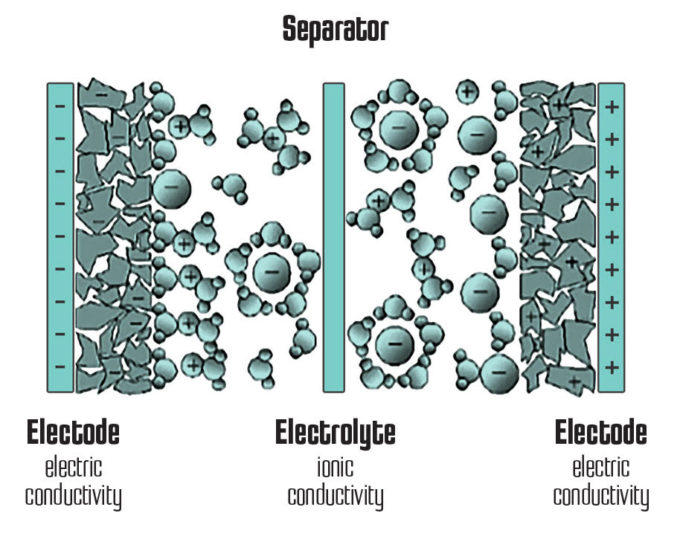
Figure 6. Internal structure of a supercapacitor.
Low-power Medical Devices
The objective here is to obtain an efficient energy harvesting by reducing the size of the battery. The classic example is the pacemaker (Figure 6). A vibrational energy harvesting system, for example, would allow the reduction in the size of the pacemaker and also extend the battery life. Currently, the size of a typical pacemaker is about 40 mm x 50 mm x 5 mm; the battery consumes about 60% of this area!
A second objective, then, is to reduce the area, and then set the maximum size of the energy harvesting techniques to, say, 25 mm-25 mm-5 mm, with power consumption on the order of 10uW. The batteries and the pacemaker circuits are encapsulated in a titanium case, and a biocompatible material with a sealed casing ensures that there is no contact between the inside of the body and the pacemaker batteries or circuits. In addition, a small fraction of the human body heat flux can be used in the energy harvesting. The heat flux can be converted into electrical energy by a thermoelectric generator (TEG).
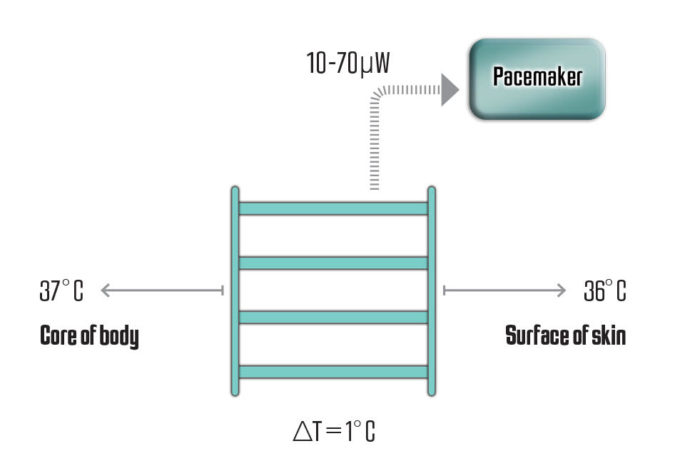
Figure 7. General structure of a pacemaker.
In summary, energy harvesting makes use of ambient energy to power small electronic devices such as wireless sensors, microcontrollers, and displays (figure 7 and 8). Typical examples of these free sources are sunlight and any artificial source such as a vibration from heat engines or the human body. Energy transducers such as solar cells, thermogenerators, and piezoelectrics convert this energy into electricity.
The goal of any energy harvesting system is to replace the batteries by extending the charging interval for the storage element. A first field of application is the automation market with self-powered switches. Further applications include monitoring systems for large industrial plants or structural monitoring of smart buildings. Another promising market is the consumer area, where clothing that integrates energy transducers in the form of solar cells or TEG or RF transmitters, can recharge consumer products such as mobile phones or audio players. Piezoelectric transducers generate electricity, which makes them ideal candidates for detecting the noise of the motor bearings or vibration in aircraft wings. Photovoltaic cells are the source of energy harvesting more widely used, but again, they are not very efficient. The best micro-crystalline solar cells—with a maximum theoretical efficiency of 30%—work well with a maximum efficiency of 20%. The technology behind energy harvesting is possible, thanks to careful analysis and design of power management factors that simultaneously reduce the levels of power consumption of electronic systems.
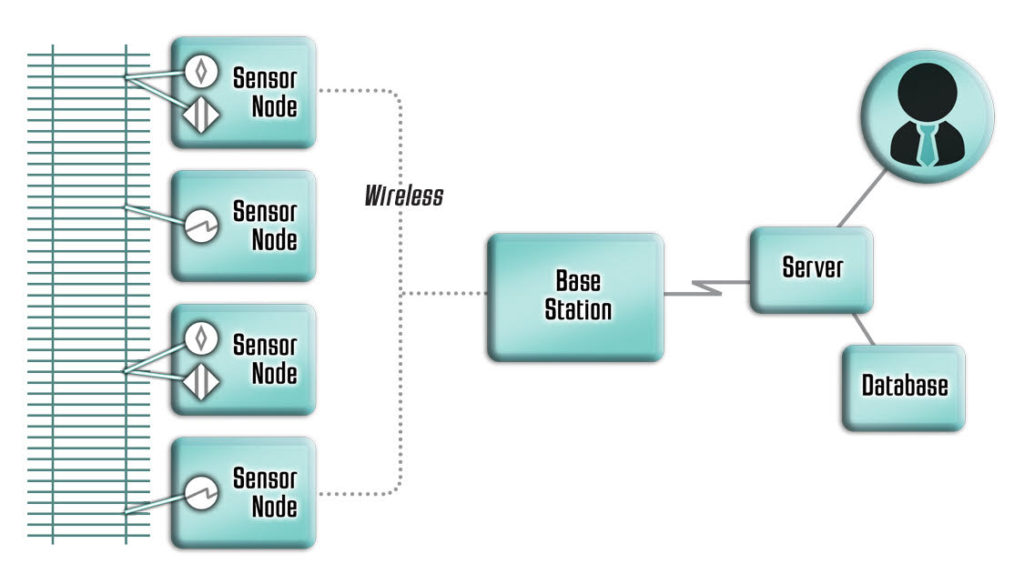
Figure 8. Block diagram of WSN (Wireless Sensor Network).
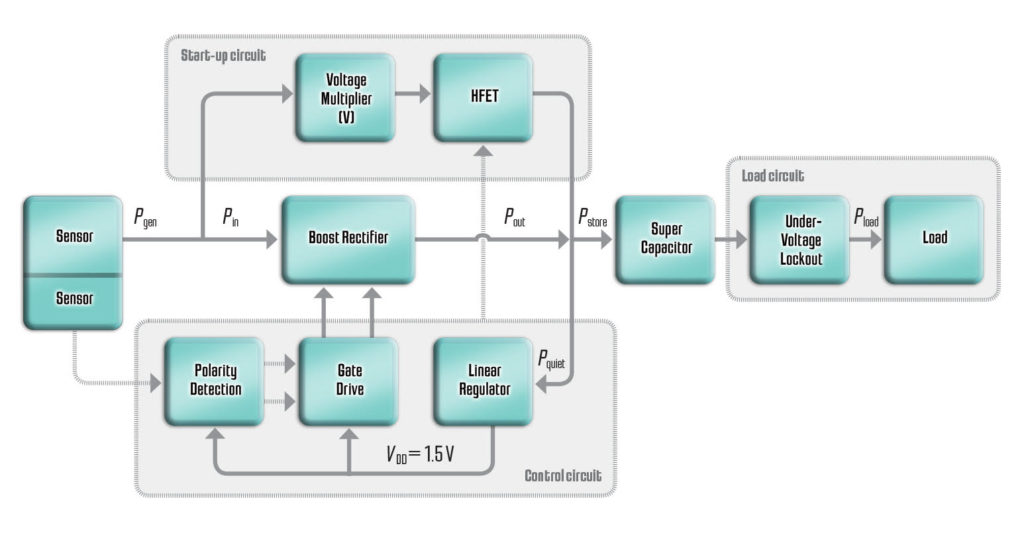
Figure 9. Internal general circuit of energy harvesting system.
About the Author
 Maurizio Di Paolo Emilio, Ph.D., Physics, is a telecommunication engineer who has worked on international projects in the field of gravitational wave research. Working as a software/hardware developer in data acquisition systems, he participated as the designer of the thermal compensation system (TCS) for the optical system used in the Virgo/Ligo Experiment (an experiment for detection of the gravitational wave). Di Paolo Emilio is the author of numerous technical and scientific publications in electronic design, physics, PCB, IT, and embedded systems. His book, Microelectronic Circuit Design for Energy Harvesting Systems, provided the basis for this article. This book describes the design of microelectronic circuits for energy harvesting, broadband energy conversion, and new methods and technologies for energy conversion. Dr. Emilio also discusses the design of power management circuits and the implementation of voltage regulators. Coverage includes advanced methods in low and high power electronics, as well as principles of micro-scale design based on piezoelectric, electromagnetic, and thermoelectric technologies with control and conditioning circuit design.
Maurizio Di Paolo Emilio, Ph.D., Physics, is a telecommunication engineer who has worked on international projects in the field of gravitational wave research. Working as a software/hardware developer in data acquisition systems, he participated as the designer of the thermal compensation system (TCS) for the optical system used in the Virgo/Ligo Experiment (an experiment for detection of the gravitational wave). Di Paolo Emilio is the author of numerous technical and scientific publications in electronic design, physics, PCB, IT, and embedded systems. His book, Microelectronic Circuit Design for Energy Harvesting Systems, provided the basis for this article. This book describes the design of microelectronic circuits for energy harvesting, broadband energy conversion, and new methods and technologies for energy conversion. Dr. Emilio also discusses the design of power management circuits and the implementation of voltage regulators. Coverage includes advanced methods in low and high power electronics, as well as principles of micro-scale design based on piezoelectric, electromagnetic, and thermoelectric technologies with control and conditioning circuit design.


